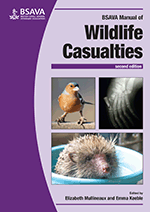
Full text loading...

The Eurasian badger is the largest of Britain’s Mustelidae species. The most common reasons for badgers requiring veterinary attention are road traffic accidents, injuries from baiting, snaring or poisoning, and intraspecific bite wounds. Orphaned badger cubs are commonly presented in some areas. This chapter covers: ecology and biology; anatomy and physiology; capture, handling and transportation; clinical assessment; first aid and hospitalization; anaesthesia and analgesia; specific conditions; therapeutics; husbandry; rearing of badger cubs; rehabilitation and release; and legal considerations.
Badgers, Page 1 of 1
< Previous page | Next page > /docserver/preview/fulltext/10.22233/9781910443316/9781910443316.17-1.gif

Full text loading...














